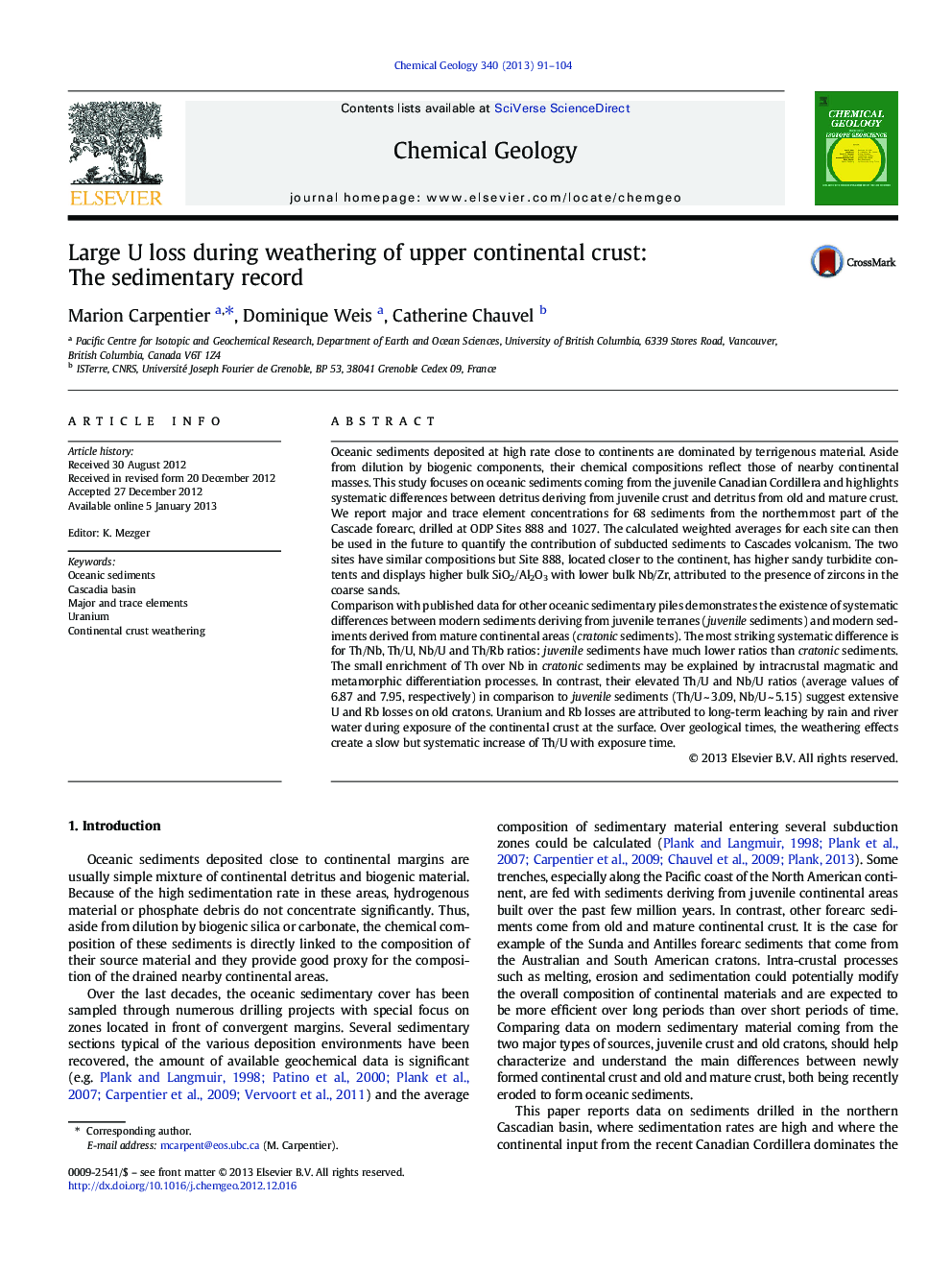| کد مقاله | کد نشریه | سال انتشار | مقاله انگلیسی | نسخه تمام متن |
|---|---|---|---|---|
| 4699092 | 1637628 | 2013 | 14 صفحه PDF | دانلود رایگان |

Oceanic sediments deposited at high rate close to continents are dominated by terrigenous material. Aside from dilution by biogenic components, their chemical compositions reflect those of nearby continental masses. This study focuses on oceanic sediments coming from the juvenile Canadian Cordillera and highlights systematic differences between detritus deriving from juvenile crust and detritus from old and mature crust. We report major and trace element concentrations for 68 sediments from the northernmost part of the Cascade forearc, drilled at ODP Sites 888 and 1027. The calculated weighted averages for each site can then be used in the future to quantify the contribution of subducted sediments to Cascades volcanism. The two sites have similar compositions but Site 888, located closer to the continent, has higher sandy turbidite contents and displays higher bulk SiO2/Al2O3 with lower bulk Nb/Zr, attributed to the presence of zircons in the coarse sands.Comparison with published data for other oceanic sedimentary piles demonstrates the existence of systematic differences between modern sediments deriving from juvenile terranes (juvenile sediments) and modern sediments derived from mature continental areas (cratonic sediments). The most striking systematic difference is for Th/Nb, Th/U, Nb/U and Th/Rb ratios: juvenile sediments have much lower ratios than cratonic sediments. The small enrichment of Th over Nb in cratonic sediments may be explained by intracrustal magmatic and metamorphic differentiation processes. In contrast, their elevated Th/U and Nb/U ratios (average values of 6.87 and 7.95, respectively) in comparison to juvenile sediments (Th/U ~ 3.09, Nb/U ~ 5.15) suggest extensive U and Rb losses on old cratons. Uranium and Rb losses are attributed to long-term leaching by rain and river water during exposure of the continental crust at the surface. Over geological times, the weathering effects create a slow but systematic increase of Th/U with exposure time.
► The continental source of Cascadia basin sediments has juvenile characteristics.
► Modern sediments eroded from juvenile crust and cratons have different compositions.
► High Th/U and Th/Rb characterize old, mature and weathered continental crust.
► Weathering leads to massive U and Rb losses in the continental crust.
► Th/U and Th/Rb increase with exposure time at the surface of continents.
Journal: Chemical Geology - Volume 340, 24 February 2013, Pages 91–104